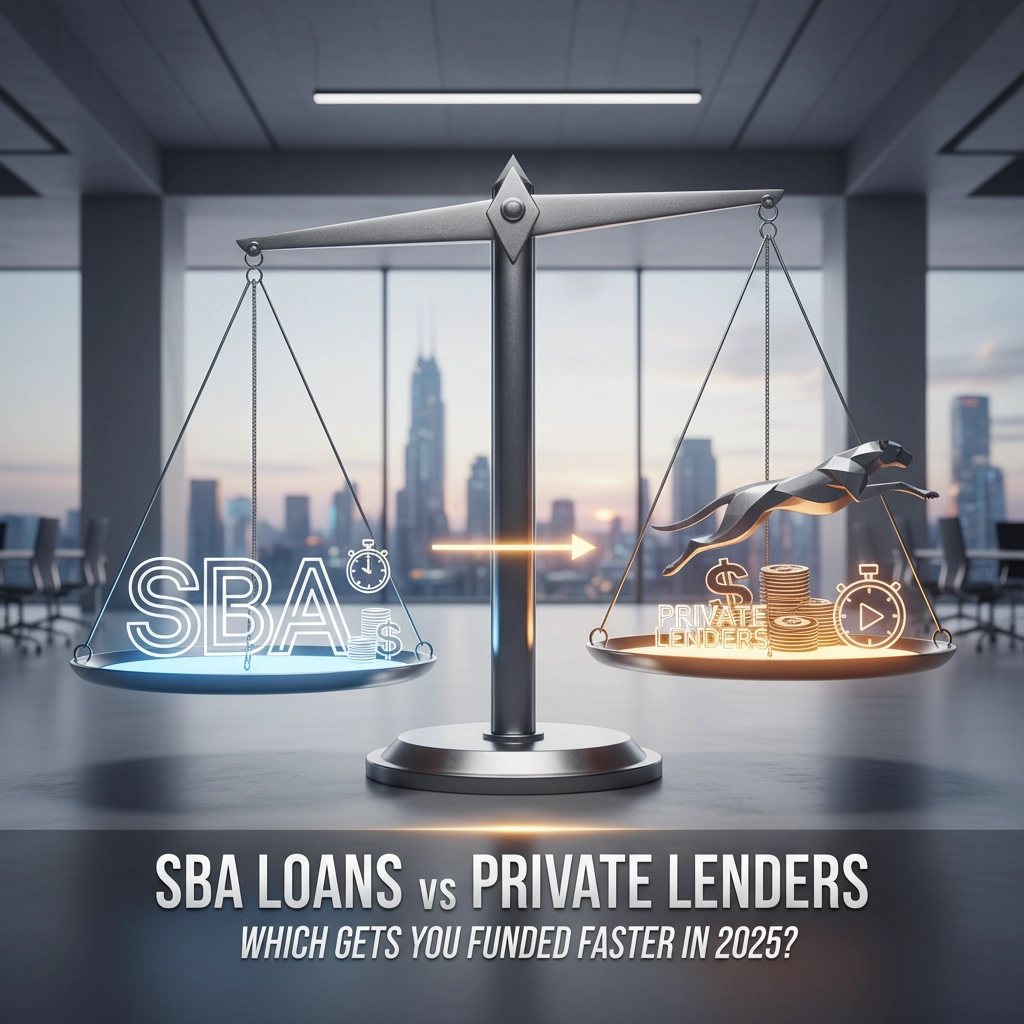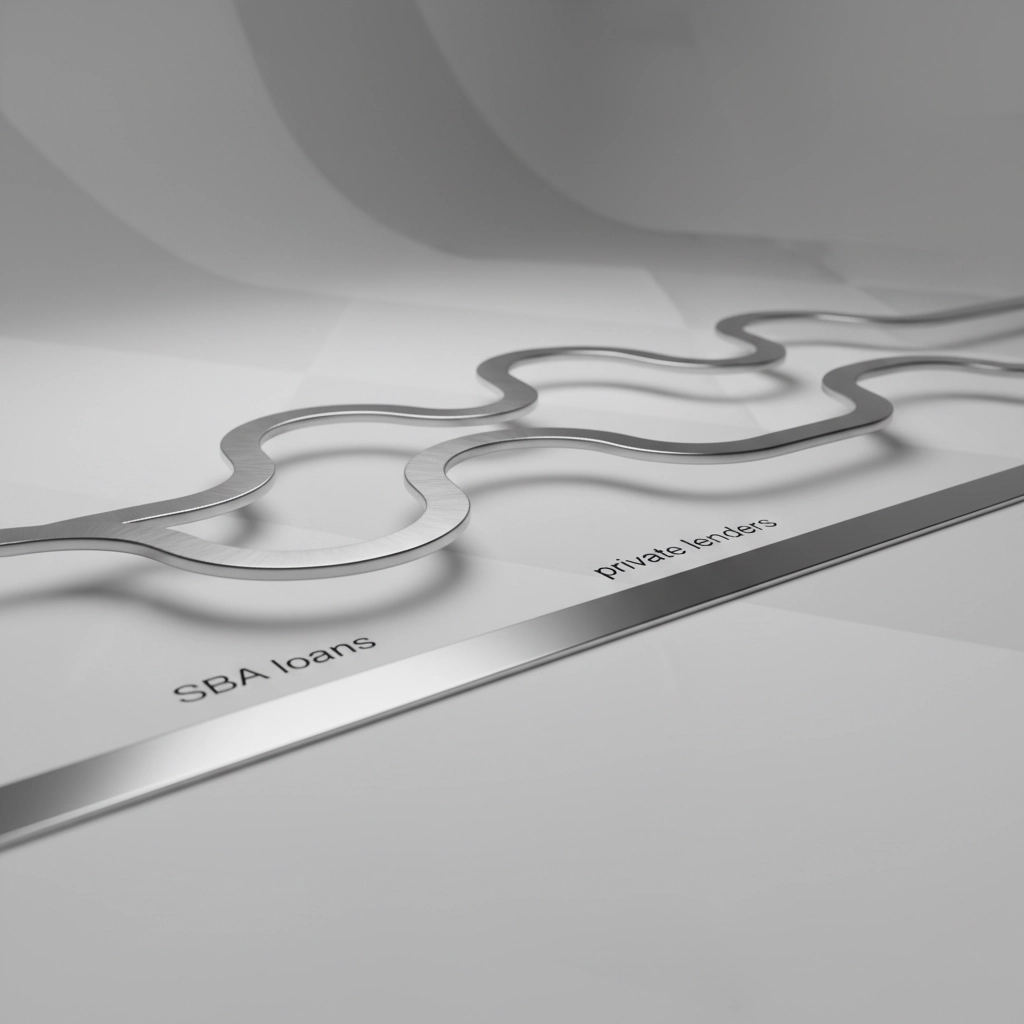SBA Loans vs Private Lenders: Which Gets You Funded Faster in 2025?

When your business needs funding yesterday, every day you wait is a day your competition gets ahead. You're facing a critical decision: chase the lower rates of SBA loans or grab the speed of private lenders. The truth? Private lenders will get you funded in days or weeks, while SBA loans typically take 60-90 days to hit your account.
But speed isn't everything in business funding. The real question is whether you can afford to wait for better terms or if immediate cash flow trumps everything else. Let's break down exactly what you're getting into with each option.
SBA Loans: The Marathon Route with Better Rewards
SBA loans are like that reliable friend who always shows up, just not when you need them most. The fastest SBA option, the Express loan, still takes 45-60 days from application to funding, even though the SBA gives approval decisions within 36 hours. That's because approval is just the first hurdle.
Here's what you're actually looking at for different SBA programs:
- SBA 7(a) loans (the most popular): 60-90 days total, with 5-10 days just for initial approval
- SBA Express loans: 45-60 days despite fast approval
- SBA 504 loans: Up to 90 days, with 30-45 days just for approval
- SBA microloans: 30-60 days for smaller amounts

The extended timeline isn't bureaucratic nonsense, it's the price of thorough vetting. You're dealing with comprehensive documentation requirements: tax returns, financial statements, business plans, personal history statements, credit checks, and potentially property appraisals. If your lender isn't part of the SBA's Preferred Lenders Program, tack on additional weeks for government review.
The upside? You're looking at interest rates between 5-8%, repayment terms up to 10 years, and monthly payments that won't crush your cash flow. For a $100,000 loan, the difference between a 7% SBA rate and a 15% private lender rate is about $400 per month, money that stays in your business instead of going to interest.
Private Lenders: The Sprint to Your Bank Account
Private lenders operate in a different universe. While SBA lenders are checking your third-grade report cards, private lenders are asking: "What assets can secure this loan?" That streamlined approach means you can go from application to funded in 3-7 days with the right lender.
The approval process focuses on collateral value rather than diving deep into your credit history. Got equipment, real estate, or inventory? That's often enough to get approved. No government oversight, no multi-layer approval process, just a direct relationship between you and the lender.

But here's the trade-off that'll hit your monthly cash flow: interest rates starting around 10% and potentially climbing past 20%. Repayment terms are typically 1-5 years, meaning higher monthly payments but faster loan closure.
For that same $100,000 loan, you might be looking at $2,000+ monthly payments versus $1,200 with an SBA loan. Over five years, you could pay $20,000-40,000 more in total interest. That's the premium for speed.
The Real-World Timeline Breakdown
Let's get specific about what "fast" actually means in 2025:
SBA Loan Reality Check:
- Application prep: 1-2 weeks (gathering documentation)
- Lender review: 1-3 weeks
- SBA approval: 3 days to 3 weeks (depending on program)
- Final underwriting and funding: 1-2 weeks
- Total: 30-90 days minimum
Private Lender Timeline:
- Application: Same day to 2 days
- Asset evaluation: 1-3 days
- Approval decision: 1-2 days
- Funding: Same day to 3 days
- Total: 3-10 days typical
When Speed Trumps Everything
Choose private lenders when you're facing scenarios like these:
Seasonal inventory crunch: You've got 10 days to stock up for holiday sales, and missing the window means missing the entire season's profits.
Equipment emergency: Your main production line just died, and every day of downtime costs you $2,000 in lost revenue.
Competitive acquisition: There's a distressed competitor's assets on the market, but the deal closes in two weeks.
Cash flow crisis: Payroll is due Friday, and a major client just delayed their payment by 60 days.
In these situations, paying an extra $500-1,000 monthly in interest is nothing compared to the revenue you'll lose by waiting.

When Patience Pays Off
SBA loans make sense when you can plan ahead and prioritize long-term financial health:
Expansion projects: Opening a new location or major renovations where you can start the loan process months in advance.
Equipment purchases: Buying machinery with 6-month lead times gives you plenty of runway for SBA approval.
Refinancing existing debt: Consolidating high-interest debt where the monthly savings justify the wait.
Building business credit: Establishing a relationship with SBA lenders for future financing needs.
The key is having 3-4 months of runway where you don't need the funds immediately.
The Hybrid Approach That Smart Business Owners Use
Here's what experienced business owners actually do: they don't choose one or the other exclusively. They build relationships with both SBA lenders and private lenders, then use the right tool for each situation.
Keep an SBA loan application ready for planned investments and long-term growth. When you need working capital for opportunities or emergencies, tap private lenders. This way, you're not scrambling when time is critical.
Some business owners even use private lenders as a bridge while waiting for SBA approval, then pay off the high-interest debt once the SBA funds come through. Yes, you'll pay extra interest for a few months, but you get to seize opportunities without waiting.

Making the Smart Choice for Your Cash Flow
Your decision ultimately comes down to this: Can your business wait 60-90 days, or do you need funding within two weeks?
If you can wait and you're borrowing a significant amount (over $50,000), the monthly savings from SBA rates will compound over time. A $200,000 SBA loan at 7% costs about $4,000 monthly versus $5,500+ with a private lender: that's $18,000 less per year going to interest.
But if speed is critical and you can pay the loan back quickly, private lenders give you the flexibility to move fast. The extra cost becomes an investment in capturing opportunities that wouldn't exist in three months.
Your Next Step: Assess Your Timeline and Risk Tolerance
Start by honestly evaluating your funding timeline. If you need money in the next 30 days, stop researching SBA loans and focus on private lenders with strong reputations and transparent terms. If you have 3+ months and want to optimize for cost, begin your SBA application process now.
For ongoing business health, consider establishing relationships with both types of lenders before you need them. Having a pre-approved line of credit with a private lender gives you emergency access to capital, while an existing relationship with an SBA-preferred lender can speed up future applications.
The businesses that thrive are the ones that match their funding strategy to their actual needs: not the ones that get stuck chasing the "perfect" loan that arrives too late to matter.
Remember: the fastest loan is worthless if it arrives after your opportunity is gone, but the cheapest loan doesn't help if the monthly payments crush your cash flow. Choose based on your timeline, then structure your business to avoid emergency funding needs in the future.
Your business deserves financing that works with your growth plans, not against them. Whether that means waiting for better terms or paying for speed, make the choice that keeps your business moving forward.
#SBALoans #BusinessFunding #PrivateLenders #SmallBusinessFinance #BusinessCashFlow #CommercialLending #BusinessCapital #Entrepreneurship #BusinessGrowth #FinancialStrategy #SmallBusiness #BusinessLoans #AlternativeLending #BusinessFinancing #CashFlowManagement
